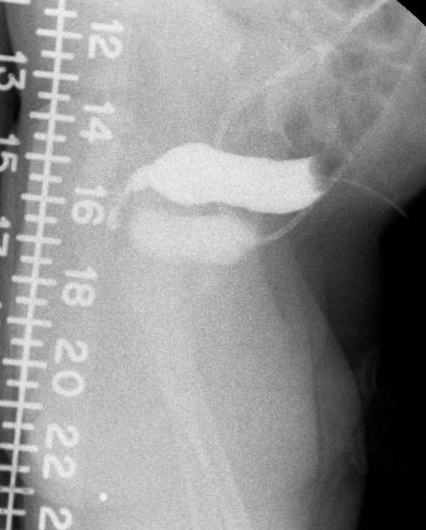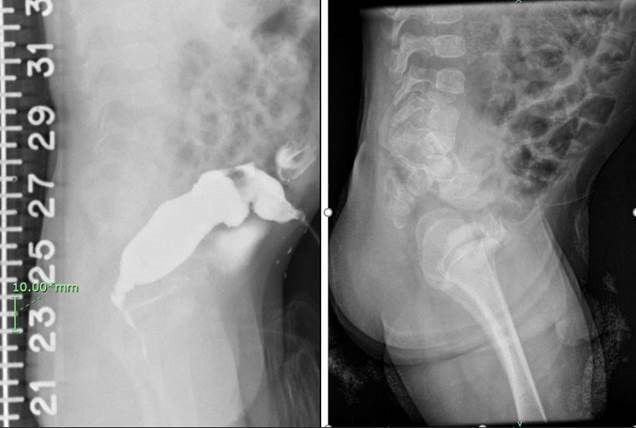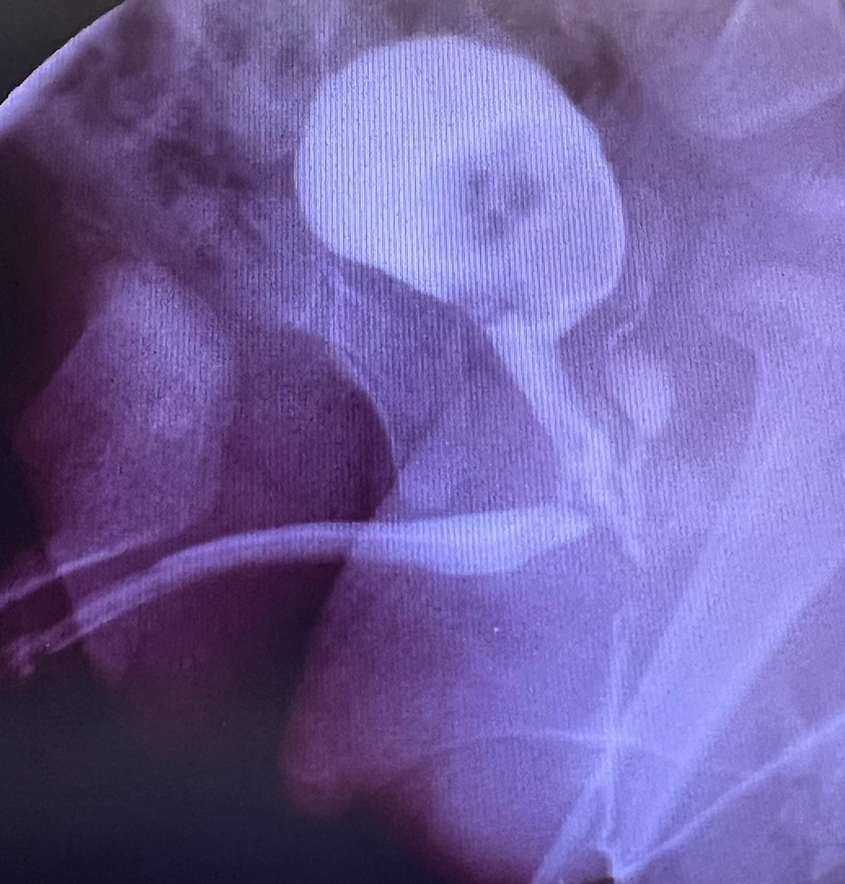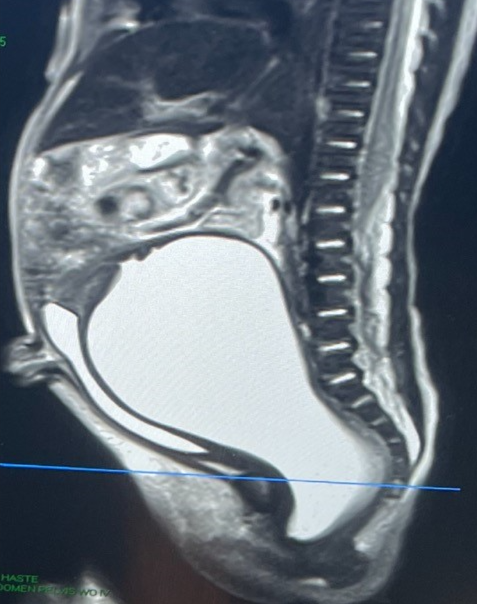Colorectal Quiz: August 14, 2023
Quiz for August 8:
How would you handled the below case, a male with ARM, who underwent a newborn colostomy, and here you see the distal colostogram. What is the malformation and what would be your approach?

Answer for August 8:
This rectum is very high, bladderneck level, but the piece of bowel distal to the mucous fistula is very short. Therefore I believe this patient will need takedown of the mucous fistula with pull-through, and rather than leaving a Hartman’s behind the bladder which would make for a very difficult colostomy closure, my preference in such a case would be to take down the colostomy, make an anastomosis and divert more proximally with either the left colon or with an ileostomy. Leaving the patient un-diverted is a consideration but safest certainly is to re-divert.
Quiz for August 14:
For this week, a variation on the theme from last week, how would you approach this male ARM, with the below distal colostogram. I added the sacral xray because the sacrum is hard to see on the colostogram images.

How would you handle this case?




